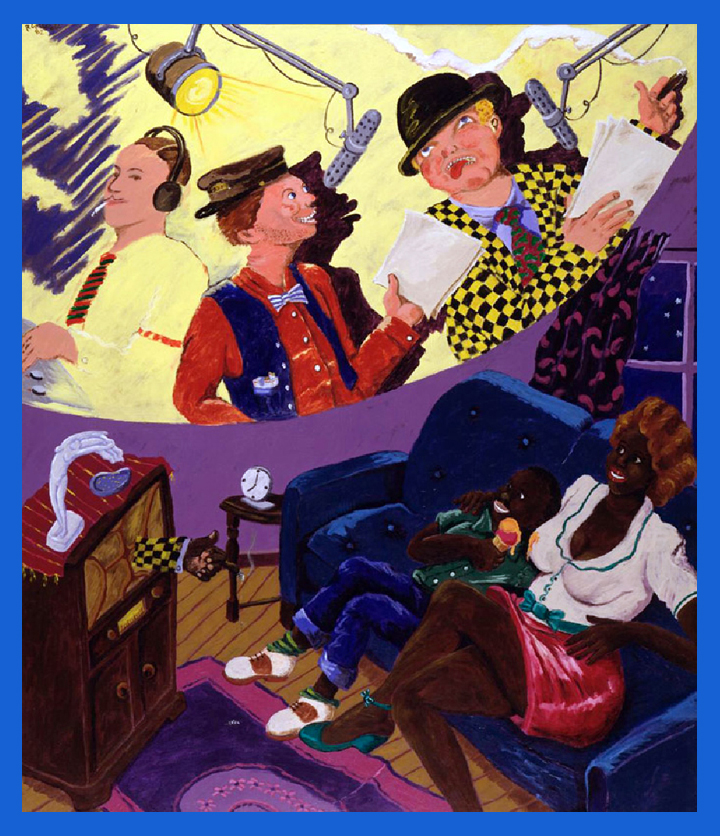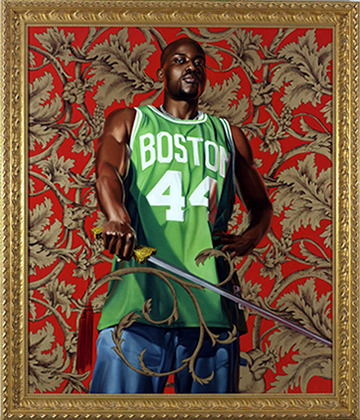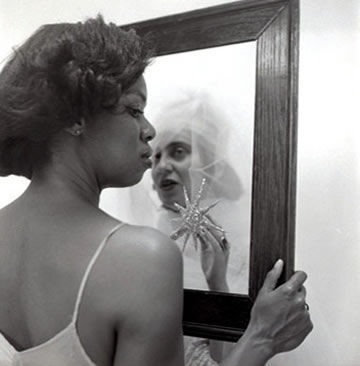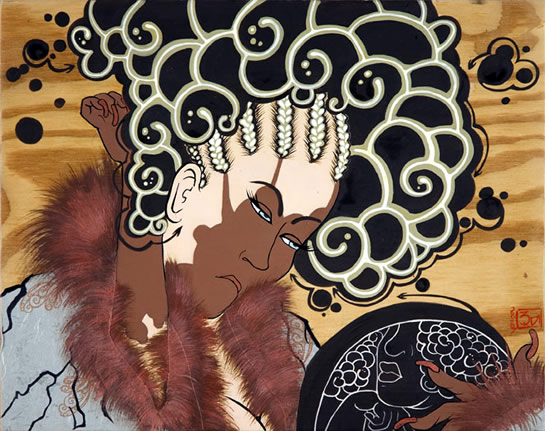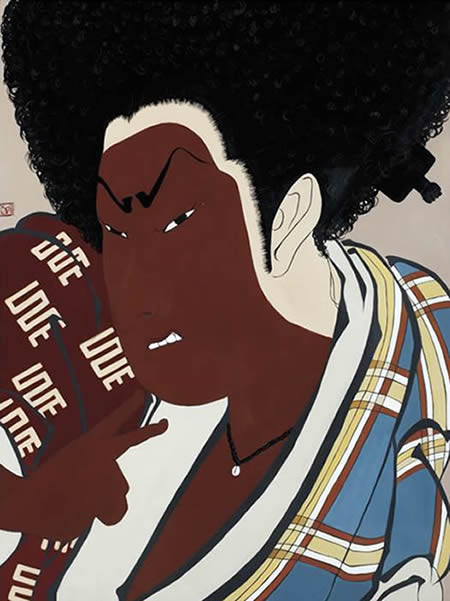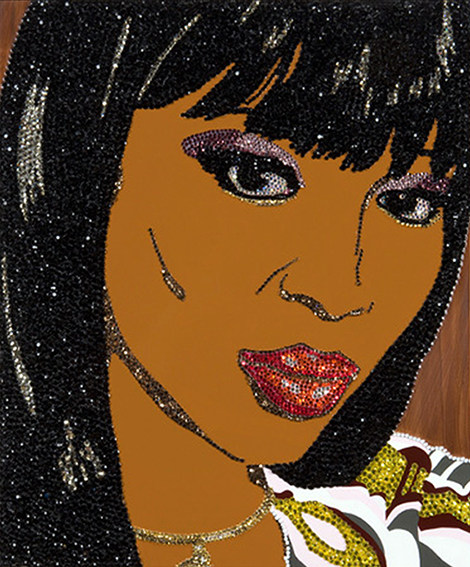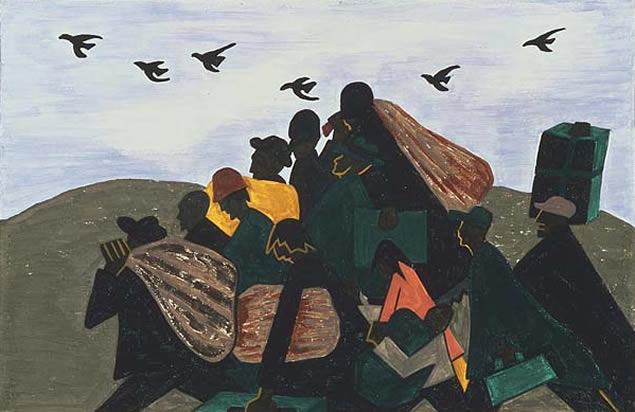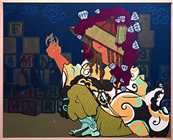TA
THE CONSCIOUS VOICE |
 |
aRT cULTURE dESIGN |
|---|
Two 2016 West Coast Debuts...30 Americans: Masterpieces of Contemporary African-American Art |
|---|
Robert Colescott, Listening to Amos and Andy, 1982, acrylic on canvas. |
After touring the East Coast, the critically acclaimed exhibition 30 Americans will make its West Coast debut at the Tacoma Art Museum, September 16, 2016. The exhibition showcases an influential group of prominent African American artists who have emerged as leading contributors to the contemporary art scene in the U.S and beyond. It is an inside view of the African American experience, as told through the voice of her prolific artists. While some of the featured artists, like Colescott, Carrie Mae Weems, Purvis Young, Nick Cave, William Pope L., Kerry James Marshall and Barkley Hendricks grew up admist the Civil Rights and Black Power movements of the 1960s and '70s, others continue to live within its aftermath, making 30 Americans an amazing visual display of several generations of artists, intermixing in interesting ways.
|
Kehinde Wiley, Alexander the Great 2
|
Carrie Mae Weems, Mirror-Mirror Inscription: Looking in the mirror, the Black woman asked, "Mirror, Mirror on the wall, whos' the finest of them all?" The mirror says, "Snow White, you Black bitch, and don't you forget it!!!"
|
|---|
David Hammons, Lorna Simpson, Kara Walker, Carrie Mae Weems and Glenn Ligon opened up new dialogues in conjunction with the multiculturalism and identity politics discourse of the '90s. Racism, gender relations, and personal identity are the focus of Weems (born 1953) award-winning work. Her photographs, films and videos have been displayed in more than 50 exhibitions in the U.S. and abroad. In her "Aint Jokin" (1987-1988) series, Weems addresses the condescending and vicious nature of racism. Mirror-Mirror, above, is from this series. Kehinde Wiley (born 1977) is known for his large scale, highly patterned paintings of contemporary Black men in heroic poses based on well-known and powerful firgures from 17th-19th century Euporean art. In many of the works, young Black, urban and hip hop culture is both transformed and validated. Iona Rozeal Brown's paintings blend African-American and Asian cultural attributes and reference the obsession of hip-hop style among Japanese youth. Brown first learned about the ganguro while studying painting at the San Francisco Art Institute. Then she traveled to Japan in the late 1990s where she met members of the ganguro tribe. Ganguro, or literally, “black face,” are fashion-conscious Japanese teenagers who want to look cool, black and American, much like their hip-hop idols. They dress in funky clothes, dye and braid their hair in cornrows and darken their skin at tanning salons or with makeup. Ganguro grew parallel with the popularity of hip-hop in Japan. Brown's fascination with this style inspired this particular body of work and addressesd the global influence of African-American culture as fetish.
|
|---|
Iona Rozeal Brown, untitled |
Glenn Ligon’s work pushes the boundaries of conceptualism into a socio-political realm. Ligon’s paintings incorporate phrases and text from diverse sources from famous 19th-century abolitionist Sojourner Truth to the stand-up comedian, Richard Pryor. In his photographs, 34-year old artist Rashid Johnson mines the past in search of his own self-identity, portraying himself as abolitionist Frederick Douglass. The self-assured, confident stance, as well as the dignity and beauty of his subjects are carried over into Mickalene Thomas’s glitzy and alluring paintings of contemporary women. Seductive and empowered, Mickalene’s portraits speak to a woman’s roles in our post-feminist world. 30 Americans will be on view through Jan. 15, 2017
|
|||
|---|---|---|---|
Mickalene Thomas, Portrait of Naomi, commission for V Magazine, 2010. Rhinestones, acrylic and enamel on wood panel, 24 x20 in.
Also on view in Washington....
JACOB LAWRENCE: The Migration Series, opens at the Seattle Art Museum, January 21, 2017
After the epic premier at The Phillips Collection in Washington, DC, Jacob Lawrence: The Migration Series will open at the Seattle Art Museum in commemoration of the 100th anniversary of artist Jacob Lawrence’s birth. On view January 21–April 23, 2017, the exclusive West Coast show represents the first time in more than two decades that all 60 panels of Lawrence’s masterwork will be shown on the West Coast. The Migration Series - depicts the exodus of African Americans from the rural south between World War I and World War II. SAM will install the series like a mural on the walls of its Gwendolyn Knight & Jacob Lawrence Gallery, which was created to honor the artists enduring gifts to the city. Lawrence moved to Seattle in 1971, teaching at the University of Washington until 1983. His series of five paintings on the westward journey of African American pioneer, George Washington Bush, are in the collection of the State of Washington History Museum. In 1988, he received Washington State's highest honor, The Washington Medal of Merit. The Migration Series is a revelatory monument of early modern American art," said Patricia Junker, SAM’s Ann M. Barwick Curator of American Art. "Now is an extraordinary moment to return to it - the themes of social justice it explores are timeless.”
|



